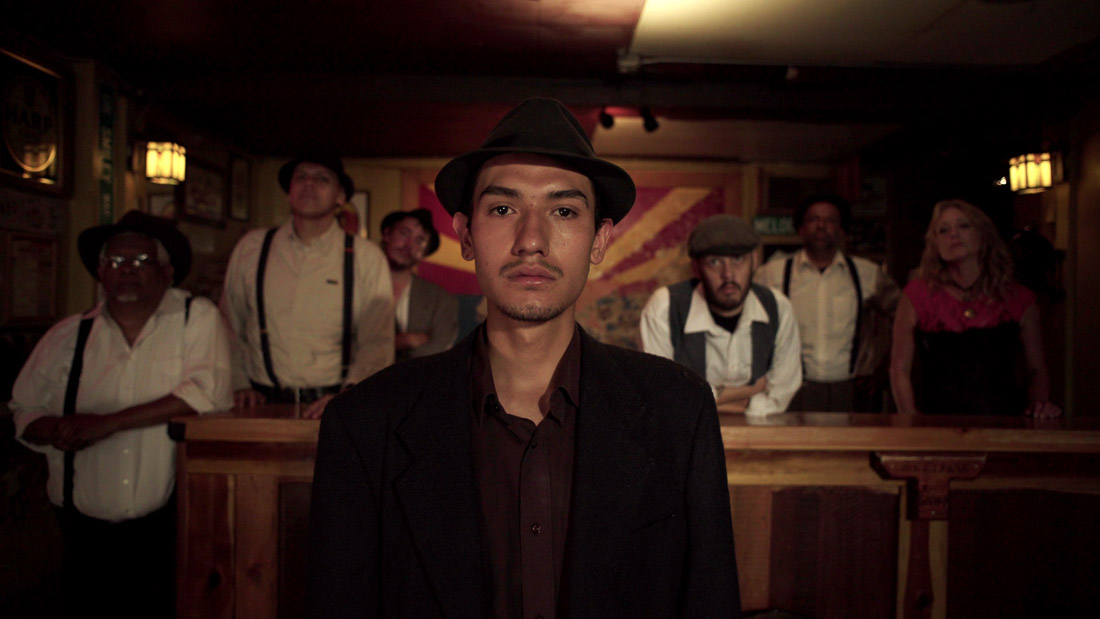A man who called Mexicans “rapists” sits in the Oval Office. Building a border wall is no longer a joke but a real threat. DREAMers, many of whom are from Latin America, see their futures in limbo, as are the futures of many other Latino families. While some things change, others stay very much the same. For many decades and even centuries, Latinx communities got a raw bargain in the United States, whether by outright discrimination, disenfranchisement or more covertly criminalizing our skin color, our neighborhoods or behaviors, or breaking up families through prisons or deportation. Three documentaries at this year’s Sundance Film Festival – Bisbee ’17, The Sentence, and Crime + Punishment – grasp the historical roots of current-day hatred. While we can marvel at how far we’ve come, we may also weep for the lives still affected by prejudice, and get angry for the work still left to do.
A hundred years ago in a far-flung stretch of Arizona, the town of Bisbee uprooted and deported 1,200 workers for unionizing against the local mining company. The deportees were taken to the desert and left to die. To save face, the company town hid their actions for years, but many families never forgot. Many of the deported men were from Eastern Europe or Mexico, and the effort to throw them out of town was seen as a kind of racial and ethnic cleansing. In the present day, Robert Greene’s Bisbee ’17 connects the tragic events of the past to the present, where the fading town is recreating the deportation in a exorcism-like move to honor and remember the families affected.
While many of the faces and voices in the film are of older white descendants of old Bisbee, a young Mexican-American named Fernando Serrano has one of the most powerful presences in the town. His is one of the few non-white faces in the historical reenactment standing in for the hundreds of migrants workers punished for trying to fight for better wages. If anything, the scarcity of Mexican-Americans involved with the reenactment could mean that Bisbee’s historical purge was successful.

In more personal interviews, Serrano connects the deportation of 1917 to the deportation of his own mother, and how this trauma is not a remnant of the past. In one slightly tense scene, he corrects a white actor on his misguided notion that immigrants at that time didn’t want to assimilate to Bisbee’s culture to explain the prejudices against them. It was the white Americans who came to that region and didn’t assimilate to the Mexican culture that was already there, Serrano fires back.
RELATED: 5 Heartbreaking Facts From ‘They Call Us Monsters’ Doc on Latino Teens Facing Life in Jail
While Bisbee 17‘s revisiting of history is a powerful reminder of what we’ve endured, we don’t need to travel back in time to see the effects of unfair treatment of Latinos in the U.S. Rudy Valdez’s The Sentence is a personal documentary about his family’s brush with minimum sentencing laws, which disproportionately affect black and brown defendants. In Valdez’s case, his sister, Cindy, was sentenced to prison for living with a drug dealer, which the police claimed made her complicit in his crimes. She was given 15 years for conspiracy charges six years after the events occurred – even though she had left him, settled down with someone else and had three little girls – because the minimum time assigned to her crime said so with no room for interpretation by a judge for the accused’s situation. This film does not leave out the heartbreaking toll the prison sentence takes on Cindy’s family and the isolation they felt when fighting to keep her voice present in her daughters’ lives. Although the documentary doesn’t look at the widespread problem across several stories, Valdez’s film gives the audiences an uncomfortably close look at the effect on those in front of the camera. He strips away the anonymity of numbers and gives the problem a name: his sister, Cindy’s.
These movies don’t alter or whitewash history, but draw attention to the ugly parts textbooks have tried to hide from us.
For a wider look at a bigger criminalization problem, Stephen Maing’s Crime + Punishment focuses on the quota system in New York City (which are used informally despite a statewide ban) and how it incentivizes the police to pick up typically young brown and black men for unsubstantiated or minor offenses. That story is pretty harrowing enough, but then the film highlights a young man’s experience of being falsely accused of murder, and the “catch and release” style of arrests no longer look so harmless as some write off the process. Yet, his story is just one part of this documentary. A handful of cops of color stand up to the pressure to pick on their communities. Unfortunately, their actions put their careers and incomes in jeopardy as they face retribution from fellow officers and supervisors. Their shifts are disrupted, performances are nitpicked, and promotions are withheld. As the whistleblowers begin to feel unsafe, the film leaves a lingering question if something so ingrained like a quota system can remain in place even after being banned by lawmakers, can black and brown communities ever breathe free?
These systemic efforts to suppress, erase or remove Latinx people from their homes and families have a long historical precedent. It’s easy to feel discouraged, but it’s also important to take some inspiration from the generations who fought these injustices before, like the Valdez family who stuck together or the communities of color who support each other through over-policing. These movies don’t alter or whitewash history, but draw attention to the ugly parts textbooks have tried to hide from us. They are tales of survival although they can seem like defeat. We are still here to one day shut the book on criminalizing communities of color.







